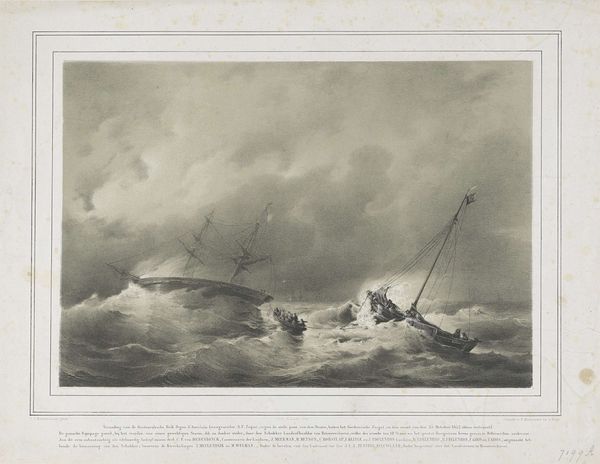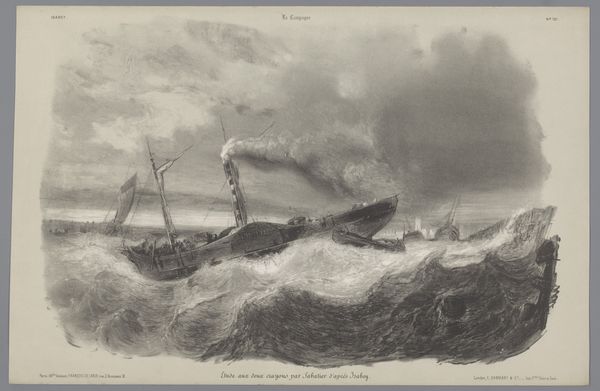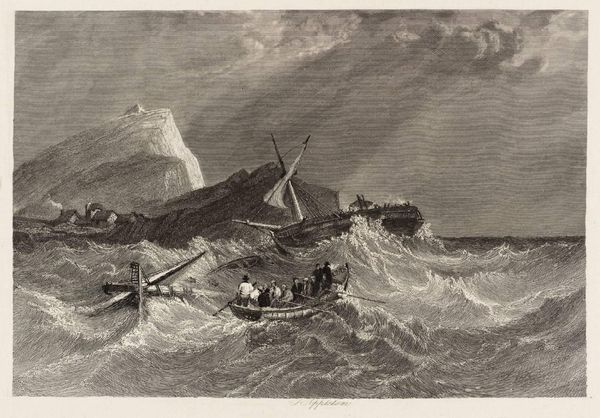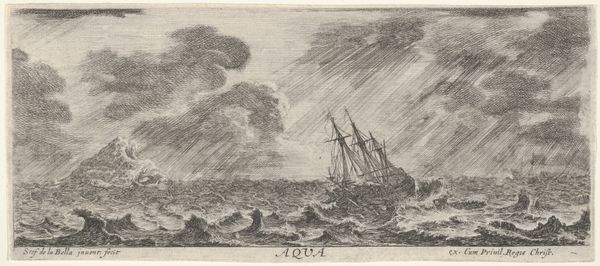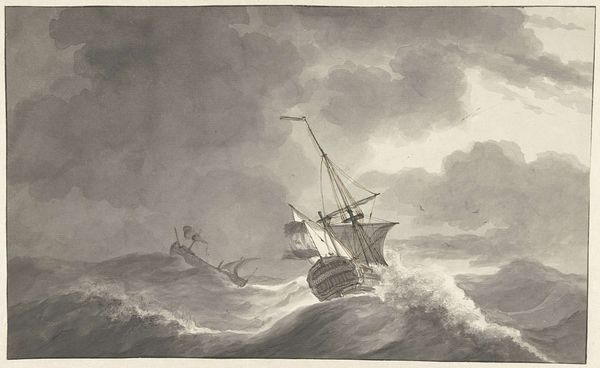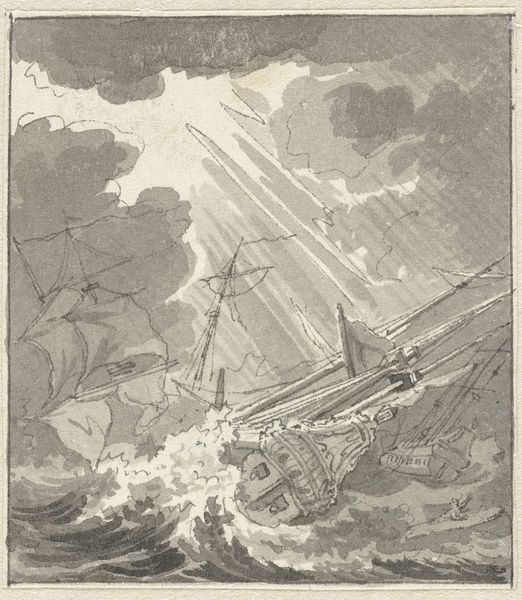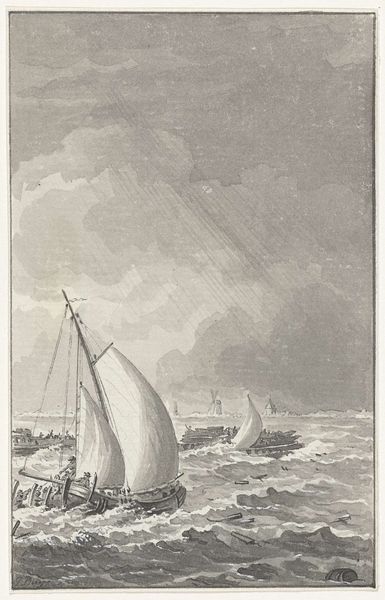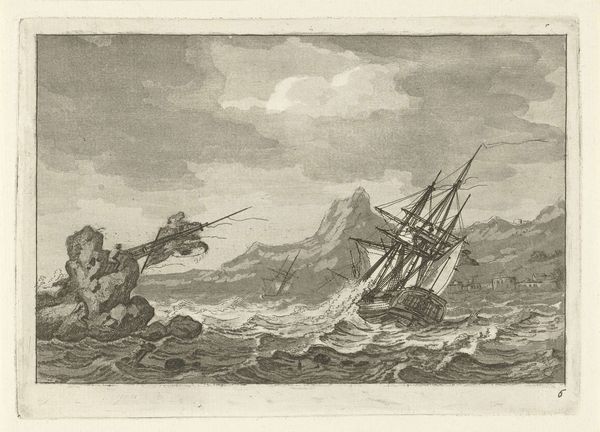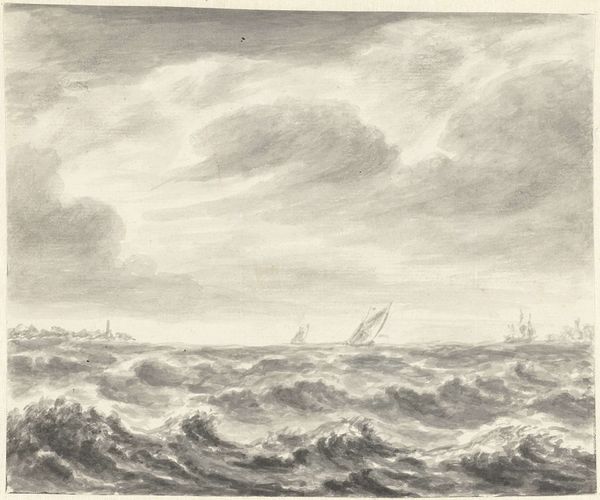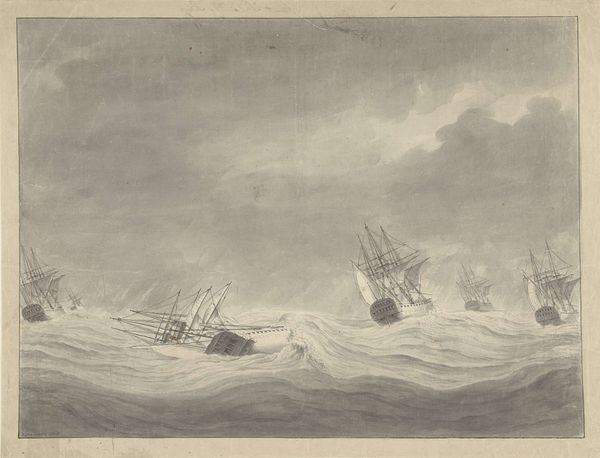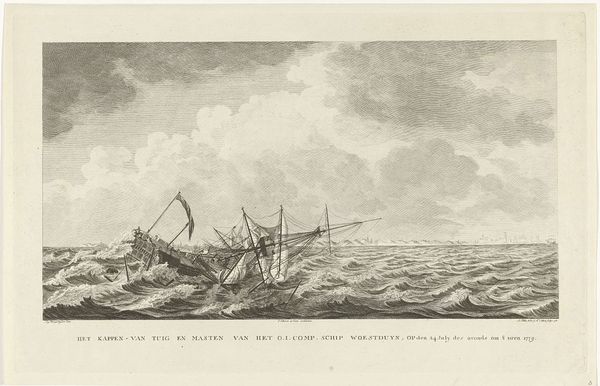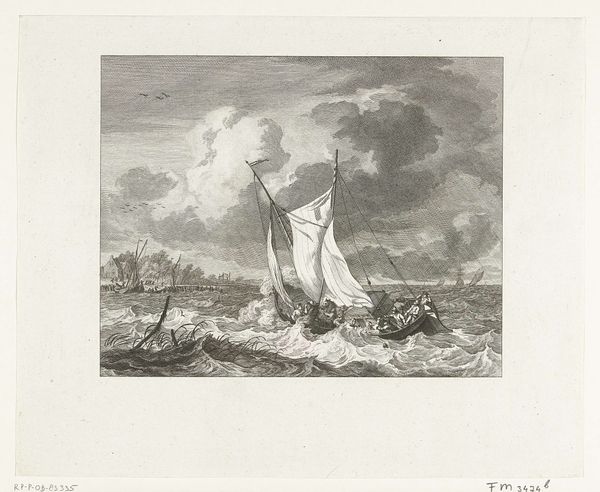
print, engraving
#
narrative-art
#
baroque
# print
#
old engraving style
#
landscape
#
history-painting
#
engraving
Dimensions: height 267 mm, width 340 mm
Copyright: Rijks Museum: Open Domain
Editor: This engraving, made by Bernard Picart around 1729 or 1730, is titled "Drowning of Prince Johan Willem Friso, 1711." It depicts a rather dramatic scene at sea, very turbulent and foreboding. What symbols or narratives do you find most compelling in this work? Curator: The iconography here is deeply rooted in the Baroque fascination with mortality and the capriciousness of fate. Notice how the raging sea and storm clouds dominate the scene. What emotions do those elements evoke for you? Editor: Mostly a sense of chaos and impending doom. Curator: Precisely. The storm isn't just weather; it symbolizes upheaval, the fragility of life, and the perceived chaos in the face of death. Consider too, how Picart contrasts this with the presence of the Prince's entourage near the building on stable land in the background; What does that contrast tell us about 18th-century perceptions of nobility, tragedy, and landscape? Editor: Perhaps, despite the chaotic event, the artist is grounding the Prince in a legacy that continues? It feels like the artist included that contrast to underscore resilience amidst loss. Curator: An insightful observation. We often forget prints like these weren't just art, but historical records, meant to solidify a legacy, and influence popular understanding of significant events. By immortalizing Prince Friso within this visually arresting tableau of natural and political forces, Picard invites contemplation not only on death, but resilience, and the enduring echoes of leadership through history. Editor: That’s a powerful way to view this. I hadn't fully considered the blend of commemoration and historical documentation at play. Thanks for unpacking that for me.
Comments
No comments
Be the first to comment and join the conversation on the ultimate creative platform.
